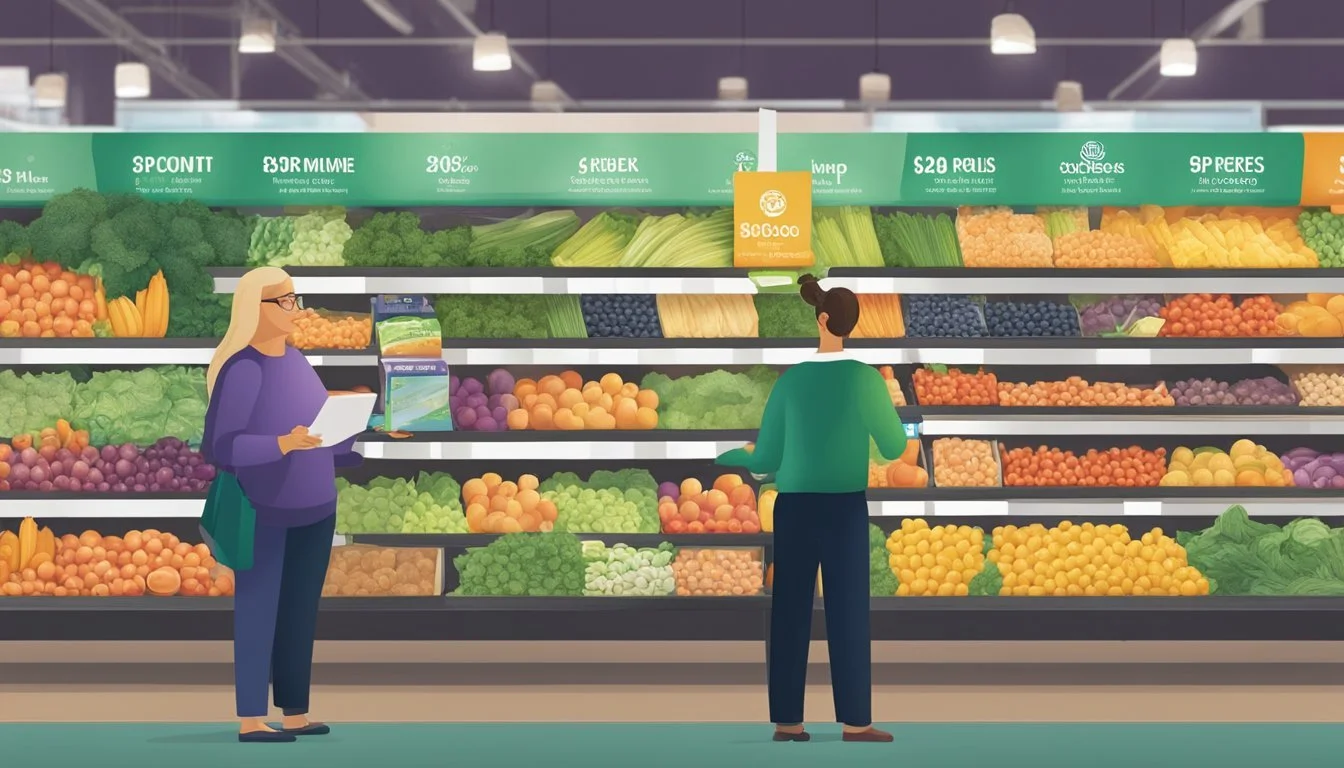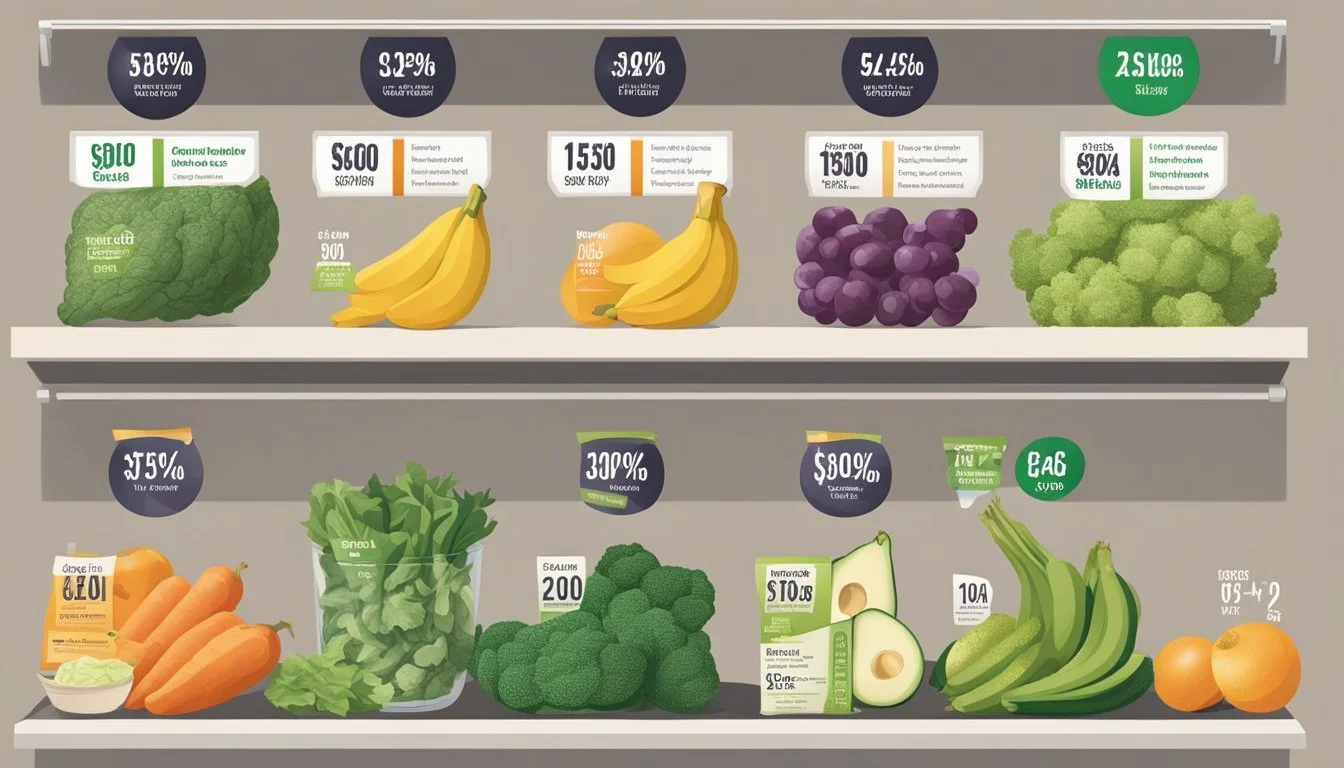Is Whole Foods Cheaper Than Stop & Shop?
Comparing Grocery Prices
Part of Our Grocery Store Guide with Details on Whole Foods Market Prices and Stop & Shop Prices
When it comes to grocery shopping, price is often a key factor for many consumers. In the debate between Whole Foods and Stop & Shop, price comparisons consistently show that Stop & Shop tends to be the more budget-friendly option. Offering a range of products at lower prices, Stop & Shop provides an affordable alternative to the health-conscious, premium offerings of Whole Foods. This affordability is particularly appealing to those who need to maintain a strict grocery budget.
Whole Foods, on the other hand, has built its brand around a selection of organic and natural foods, often justifying higher prices with the promise of quality. Despite the perception that Whole Foods is significantly more expensive, the price gap varies depending on the specific product categories in question. It is also important to consider the unique value propositions of each store, as Whole Foods emphasizes quality, dietary variety, and eco-friendly practices, which might influence a shopper's willingness to pay a premium.
The choice between Whole Foods and Stop & Shop may ultimately depend on individual priorities, such as cost, dietary needs, and personal values related to health and sustainability. While Stop & Shop offers clear-cut price advantages across various categories, Whole Foods attracts those who prioritize the quality and sourcing of their groceries, even at higher prices.
Overview of Whole Foods and Stop & Shop
Whole Foods Market and Stop & Shop have distinctly marked their presence in the supermarket landscape through their unique brand positions and service offerings, aiming to cater to different customer needs and preferences within the grocery sector.
History and Business Models
Whole Foods Market was founded on September 20, 1980, in Austin, Texas by John Mackey and a group of like-minded individuals. It started with a mission to offer natural and organic foods and has grown to become a high-end supermarket chain emphasizing quality produce and sustainable practices. Its business model is centered around health-conscious consumers, offering a variety of specialty products that often command a higher price point.
On the other hand, Stop & Shop, with a history dating back to 1914, operates with a focus on affordability and convenience. They serve a broad demographic, providing a range of staple grocery items alongside a selection of organic and natural products. Stop & Shop has established itself as a traditional supermarket, integrating value deals and cost-saving measures for its customers.
Target Customer Base
Whole Foods targets customers who prioritize organic and natural food options and who are typically willing to pay a premium for higher quality and environmentally responsible goods. These shoppers often value transparent sourcing and health-oriented products.
Stop & Shop appeals to a varied customer base that is price-sensitive and appreciative of convenience. Their customers range from those looking for everyday grocery needs at reasonable prices to those who might occasionally seek more specialized items often found at higher-end grocery stores.
Price Comparison Strategies
When comparing Whole Foods to Stop & Shop, it is important to analyze their pricing policies, factors influencing prices, and perform a price evaluation of common items to determine which offers cost savings.
Pricing Policies
Whole Foods typically follows a pricing policy that emphasizes the quality and sourcing of their products, often leading to higher prices. Stop & Shop, however, tends to offer more competitive prices, with discounts and sales being more commonly found. Customers may notice that Stop & Shop's policy allows for a broader range of products at lower price points.
Factors Influencing Prices
Several factors play into the prices observed at Whole Foods and Stop & Shop:
Location: Geographic location can influence the price due to transportation costs and local economic conditions.
Brand: Whole Foods often carries its own premium brand, which may be priced higher, while Stop & Shop offers a mix of brands, including more cost-effective options.
Product Offerings: Whole Foods may host a larger selection of organic and specialty items, which typically cost more than conventional options available at Stop & Shop.
Common Items Price Evaluation
To illustrate the price comparison:
Item Whole Foods Price Stop & Shop Price Price Difference Milk $3.49 $2.99 $0.50 Bread $2.99 $2.49 $0.50 Eggs $2.79 $1.99 $0.80
This table shows that for everyday items, one may save by choosing Stop & Shop over Whole Foods. A full price evaluation should include a basket of common items across multiple categories to determine the overall cost savings.
Quality and Variety of Products
When comparing the quality and variety of products at Whole Foods and Stop & Shop, consumers will find noticeable differences. Whole Foods markets itself with a focus on high-quality, often organic and natural products, whereas Stop & Shop offers a wide range of options to accommodate different budgets while maintaining competitive quality.
Product Variety Comparison
Whole Foods and Stop & Shop offer a vast array of products, but the diversity of their selections caters to different consumer needs. Whole Foods tends to focus on health-conscious consumers, providing a wide selection of organic foods, high-quality produce, and specialty dietary options. Stop & Shop, on the other hand, caters to a broader audience with a variety of conventional and organic options, often at more accessible price points.
Quality Standards
The quality of products, especially produce, is a cornerstone of Whole Foods' reputation. They adhere to rigorous quality standards and often source from trusted suppliers. These high standards lead to a selection of high-quality products throughout their stores. In contrast, Stop & Shop offers a range of quality levels to suit different preferences and budgets, with a commitment to providing safe and satisfactory options to their customers.
Organic and Natural Product Selection
Whole Foods boasts a robust selection of organic and natural products, making it a destination for consumers seeking these items. The store's focus on providing certified organic produce and organic food options is evident across its departments. Stop & Shop also provides organic options, but the concentration of organic and natural products is typically less pronounced than in Whole Foods. The availability of organic produce and products at Stop & Shop, however, allows for a budget-friendly approach to healthier choices.
Membership and Discount Programs
When considering cost efficiency at Whole Foods and Stop & Shop, one cannot overlook the impact of membership and discount programs available at both stores. Each chain offers unique benefits that reward customer loyalty and enhance the shopping experience through savings and special deals.
Amazon Prime Benefits at Whole Foods
Whole Foods Market, now under Amazon ownership, presents substantial savings for Amazon Prime members. They can enjoy a range of offers:
Extra 10% off: Members save an additional 10% on items marked with yellow sale signs. This discount applies storewide, yet excludes alcohol.
Prime Member Deals: Seasonal favorites and other products receive exclusive discounts for Prime members throughout the year.
To access these benefits, Prime members must scan their Whole Foods Market or Amazon app at checkout.
Stop & Shop Loyalty Programs
Stop & Shop encourages repeat business through its own loyalty program. Members benefit from:
Gas Rewards: Earn points for discounts at participating gas stations.
Go Rewards: Shop and earn points for future savings within the store.
Their loyalty programs are designed to build a consistent customer base by offering tangible rewards that can lead to significant discounts on future purchases.
Consumer Spending Patterns
Understanding consumer spending patterns is key to analyzing which grocery stores offer the best value. These patterns are affected by factors such as average spend per trip and the various savings tactics consumers employ.
Average Spend per Shopping Trip
Consumers typically have a set budget for their grocery shopping, with many aiming to keep their expenditure around $250 per week. At Whole Foods, patrons expect premium products and thus may have a higher average spend per shopping trip. In contrast, Stop & Shop attracts consumers with more competitive pricing, which can lead to a lower average spend per visit.
Whole Foods: Higher average spend due to premium product offerings
Stop & Shop: Generally lower average spend encouraged by competitive prices
Consumer Savings Tactics
Shoppers employ numerous tactics to save money where possible. Given the price difference between Whole Foods and Stop & Shop, the latter may be more associated with savings due to the following behaviors:
Buying store brands: Consumers save by opting for Stop & Shop's store-brand products over national brands, which tend to be more expensive at Whole Foods.
Utilizing discounts and loyalty programs: Shoppers at Stop & Shop can take advantage of loyalty programs and discounts, offering significant savings over time.
Purchasing fewer luxury items: With a focus on savings, consumers may purchase fewer gourmet or luxury items, which are often abundantly available at Whole Foods.
By employing these tactics, consumers are able to manage their money more effectively, often leading to substantial savings over time.
Additional Services and Options
When comparing Whole Foods and Stop & Shop, one must look beyond product prices and quality. This section explores the nuances of each store's additional services, particularly in terms of grocery delivery and convenient shopping options, as well as their prepared foods and deli services.
Grocery Delivery and Convenience
Whole Foods Market partners with Amazon for grocery delivery and pickup services, offering Prime members benefits such as two-hour delivery in select areas. Customers appreciate the convenience and speed of Whole Foods' service, especially when combined with the Amazon shopping experience.
Stop & Shop counters with its Peapod service, providing grocery delivery with variable time slots for added convenience. While this service may carry a delivery fee, it offers a vast selection, allowing customers the ease of shopping without visiting a physical store.
Prepared Foods and Deli Services
At Whole Foods, customers find a wide array of prepared foods that cater to various dietary needs including vegan and gluten-free options. The store's deli counter is known for its organic and natural food selections, which are prepared fresh daily.
In contrast, Stop & Shop offers a more traditional deli experience, with readymade meals and standard deli items at competitive prices. They provide a reliable choice for shoppers looking for convenient, ready-to-eat options without the premium price tag associated with Whole Foods.
Comparing Store Brands and Generic Options
When assessing the store brands and generic product options at Whole Foods and Stop & Shop, it's essential to examine the variety offered and the cost-effectiveness of these alternatives. Both retailers provide shoppers with a myriad of generic staples and an assortment of store-brand items, potentially influencing the overall grocery expense.
Store Brand Assortment
Whole Foods markets its store brand under the name '365 Everyday Value,' offering a wide selection of organic and natural products. The assortment ranges from pantry staples to frozen goods, putting a significant emphasis on quality and health-conscious options. In comparison, Stop & Shop features its own brand product line, encompassing a diverse array of grocery items that cater to everyday needs, including pantry staples, dairy, and frozen foods. While Whole Foods places a priority on organic and specialty items, Stop & Shop's assortment includes a broader mix of standard and specialty products.
Generic Product Availability and Pricing
Regarding generic product availability and pricing, Stop & Shop and Whole Foods operate differently. Stop & Shop typically prices its generic items competitively, aiming to provide customers with an affordable alternative to national brands. Their pricing may not always rival discount-oriented stores like Aldi or Walmart, which are known for their commitment to low prices on generic products. Whole Foods, although offering a premium selection of store-branded goods, generally maintains higher pricing in line with its focus on organic and high-quality offerings.
Aldi and Walmart, in contrast, focus heavily on cost savings, thus providing a vast selection of generic products at prices that are often significantly lower.
At Target, customers can also find a variety of generic staples under the 'Market Pantry' and 'Good & Gather' lines, which offer competitive pricing.
As both Whole Foods and Stop & Shop continue to serve their respective market segments, the availability and pricing of their store brands and generic options reflect their unique brand philosophies and target demographics. Customers seeking organic and specialty items may find Whole Foods' offerings preferable, albeit at a higher cost, while those prioritizing a balance between variety and value may lean towards the generic options available at Stop & Shop.
Shopping Experience and Customer Service
Whole Foods Market is known for its focus on quality produce and organic items, providing a shopping experience tailored towards a customer base that values these attributes. Stop & Shop, on the other hand, emphasizes a balance of affordability and variety, catering to shoppers seeking a wider range of products at lower prices.
In-Store Experience
At Whole Foods, customers find themselves in a well-organized, aesthetically pleasing environment, which prioritizes high-end and health-oriented shopping categories. The staff at Whole Foods are typically well-versed in product knowledge, which complements the premium ambiance of the store. In contrast, Stop & Shop offers a more traditional supermarket setting that prioritizes functionality and efficiency, aiming to deliver an affordable and convenient shopping experience.
Customer Support Services
Whole Foods' customer support services are built around their philosophy of providing superior service to match their premium products. Employees are often available to assist with inquiries and provide recommendations. Stop & Shop's customer service aims to be responsive and helpful, focusing on facilitating a smooth shopping experience for a diverse customer base. Both stores offer support services to ensure customer satisfaction, but the level of personalized attention may vary between the two, with Whole Foods typically investing more resources into customer interaction.
Market Comparisons and Competitors
In evaluating the competitiveness of Whole Foods against Stop & Shop, one must consider pricing strategies, consumer preferences, and market presence against various grocery chains within the industry.
Comparison with Other Grocery Chains
Wegmans and Safeway are notable competitors in the premium grocery segment, often emphasized by their diverse and high-quality product selections. Trader Joe's is recognized for its value offerings, with prices generally perceived as lower than those at Whole Foods. On the other hand, Hannaford and Price Rite cater to different market segments, focusing on cost-effectiveness and serving as alternatives to budget-conscious consumers.
In a direct comparison, Stop & Shop's pricing structures are often pitched against those of Kroger, Sprouts, and Publix, alongside Market Basket, which is acknowledged for its lower price points. While each chain has its unique market positioning, they collectively shape the grocery industry's competitive landscape, influencing consumer options and availability of products.
Competitive Pricing Table: Grocery Chains
Grocery Chain Estimated Price Positioning Market Perception Wegmans High-End Quality focus Safeway Mid to High-End Mixed offering Trader Joe's Low to Mid-End Best value Hannaford Mid-End Cost-efficient Price Rite Low-End Budget-friendly Kroger Mid-End Widely affordable Sprouts Mid to High-End Health-centric Publix Mid-End Customer service oriented Market Basket Low to Mid-End Notably lower prices
Competitive Analysis
The supermarket landscape is a tapestry of strategic positioning where chains like Trader Joe’s and Market Basket compete on price, challenging Whole Foods in the arena of value. Wegmans is often cited as a direct competitor to Whole Foods due to its focus on quality and the shopping experience, while Sprouts overlaps with organic and natural food offerings.
Publix distinguishes itself through superior customer service, potentially drawing away customers who prioritize shopping experience over price. Kroger is a significant force in the industry, with competitive pricing and a vast footprint in the grocery market that caters to a wide demographic, making it a formidable rival to both Whole Foods and Stop & Shop.
Consumer choice in this sector is driven by factors including price, product selection, quality, brand loyalty, and overall shopping experience. As such, the competitive dynamics among supermarket chains are constantly evolving to meet these diverse consumer demands.
Specialty Diets and Food Sensitivities
When comparing Whole Foods and Stop & Shop, it is essential to consider the needs of individuals with specialty diets and food sensitivities. These shoppers often face limited options and require stores that cater specifically to their dietary restrictions.
Availability of Specialty Foods
Whole Foods has a reputation for a wide selection of specialty foods, particularly catering to those with dietary restrictions. Consumers can typically find a variety of products such as dairy substitutes, allergen-free snacks, and unique health-focused brands. The store's commitment to providing a diverse range of specialty food items has made it a go-to destination for individuals with specific dietary needs.
Options for Vegan and Gluten-Free Diets
Both Whole Foods and Stop & Shop offer options for those on vegan and gluten-free diets, but the range and availability can vary greatly between the stores.
Vegan:
Whole Foods: Carries an extensive variety of vegan products, including plant-based meat substitutes, dairy-free cheeses, and an assortment of vegan convenience foods.
Stop & Shop: Offers vegan choices, but the selection is less comprehensive compared to Whole Foods.
Gluten-Free:
Whole Foods: Provides a vast assortment of gluten-free products. They have designated gluten-free sections that make it easy to find suitable products.
Stop & Shop: Also stocks gluten-free products but might have a smaller selection than Whole Foods, making it less convenient for gluten-free shoppers.
Shoppers looking for a more expansive range of specialty foods, particularly those with vegan and gluten-free diets, may find Whole Foods better equipped to meet their dietary requirements.
Consumer Resources and Research
This section provides an overview of the guides and research available to consumers looking to compare grocery pricing, specifically between Whole Foods and Stop & Shop.
Available Consumer Guides
Consumers seeking information on grocery pricing can consult a range of guides such as Consumerpedia, which aggregates data and provides ratings on different grocers. Podcasts dedicated to savvy shopping and budgeting may also discuss the cost differences between grocery stores. In the Boston area, local consumer guides are especially useful as they focus on region-specific pricing and selection.
Research Studies and Price Comparisons
Researchers frequently evaluate grocery pricing, offering insights into which stores provide the most cost-effective options. Recent studies show Stop & Shop as more affordable than Whole Foods, with price differences ranging from 18% to 75% in various shopping categories. These findings are corroborated by consumer ratings that often highlight Stop & Shop's superior pricing structure.









